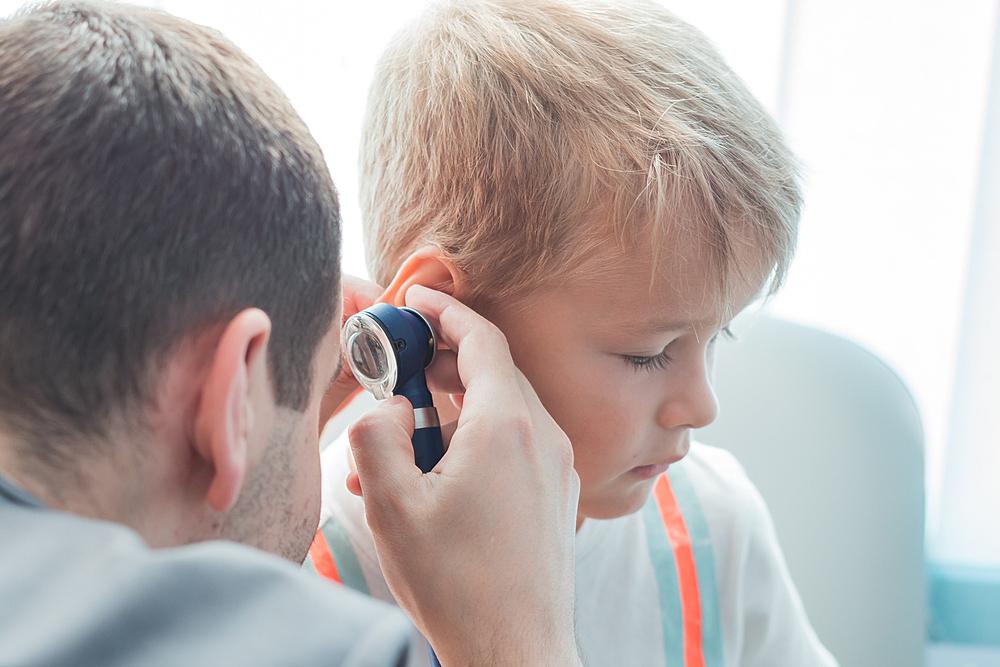Diagnosis & Evaluation
An otolaryngologist will use an otoscope to examine the patient’s ear by inspecting the external surface of the tympanic membrane (ear drum). An otoscope is a hand-sized medical device that has a source of light and a lens to help the doctor have a better look at the external ear and the eardrum.
A healthy eardrum should look like a semi-transparent pearly grey membrane that shows no signs of inflammation or bulging, otherwise, it may reflect an underlying issue in the middle ear. for instance, in acute otitis media, the ear drum is likely to be congested, less mobile, and bulging. The doctor may use a special otoscope called a pneumatic otoscope to confirm the diagnosis of otitis media by assessing the mobility of the eardrum.
For less extent, the following diagnostic modalities are used to diagnose otitis media. Tympanocentesis is a diagnostic and therapeutic procedure in which a small needle is used to puncture the eardrum and drain some fluid that will help the doctor have a more accurate diagnosis. Radiological imaging is not frequently used to diagnose otitis media unless intra-cranial complications such as brain abscess or hematoma (collection of blood outside a blood vessel) are suspected. In such cases, CT or MRI are helpful diagnostic tools.
Laboratory studies and blood tests aren’t used to diagnose a middle ear infection. However, feverish patients may need further investigations such as blood work to evaluate how severely their body is affected by the infection. Hearing tests are used for patients with otitis media only if their doctor suspected significant hearing impairment resulting from the infection.
The clinical findings together with the supportive signs and symptoms listed above are used to reach the diagnosis of otitis media. For almost all patients, there is no need for a lab test or radiological imaging. According to the American Academy of family physicians (AAFP), the diagnostic criteria of acute otitis media include the presence of middle ear effusion (fluid accumulation) showed as less mobile and bulging tympanic membrane (ear drum) in addition to signs and symptoms of acute middle ear inflammation such as erythema of the tympanic membrane and ear pain.
The absence of signs of acute inflammation may indicate chronic otitis media or otitis media with effusion. These criteria are set to guide general practitioners and primary healthcare providers into the right diagnosis, yet it doesn’t replace clinical judgment.



